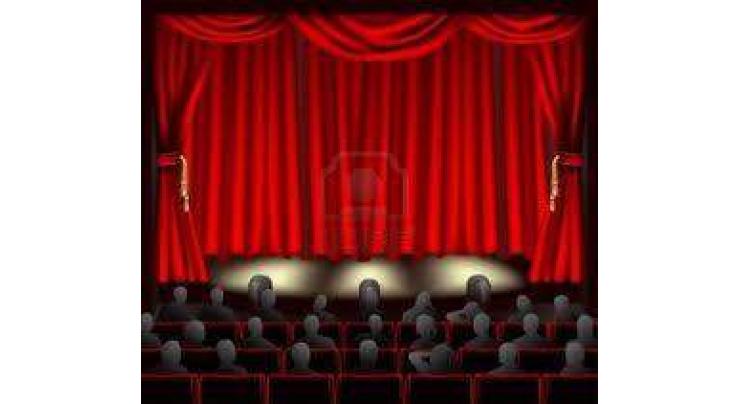
National Theatre Festival Starts Attracting Large Numer Of Audience
Anees Ahmed (@Aneesah05582539) Published November 02, 2017 | 04:10 PM

ISLAMABAD, Nov 2 (UrduPoint / Pakistan Point News - 02nd Nov, 2017 ) :The National Theatre Festival 2017 started attracting large audience as theatre groups from across the country presenting their plays at the Pakistan National Council of the Arts (PNCA).
The students of the National academy of Performing Arts (NAPA) also staged two plays in the festival, "Guriya ghar and Yahudi ki larki" and got big applause from the audience. Both plays have rightfully entertained the audience with classical flair of the theatrical performances.
The guriya ghar is an adaptation of the classical play �A Doll�s House� written by Henrik Ibsen in 1879 in Danish language. The actual characters included Nora, Torvald Helmer, Krogstad, Mrs.
Linde, Dr. Rank and two children Anne-Marie and Helene. The play was premiered on 21 December 1879 at the Royal Theatre in Copenhagen, Denmark. The thematic play revolves around the awakening of a middle-class wife and mother about their roles in the socio-cultural context.
Many situations arise in play that are contested by the women of the play to give the women in general the essence of their struggle that leads to their positive role in the societal development.
The stage setting is the home of the Helmer family in an unspecified Norwegian town or city, circa 1879. It is a three-act play and world�s most performed one that significantly deals with the fate of a married woman, who at the time in Norway lacked reasonable opportunities for self-fulfilment in a male dominated world.
It aroused a great sensation at the time, and caused a �storm of outraged controversy� that went beyond the theatre to the world newspapers and society. �Yahudi ki larki� is an urdu classical play written by the Agha Hashar who belonged to the Parsi tradition of theatre.
Parsi theatre is a generic term for an influential theatre tradition, staged by Parsis, and theatre companies largely-owned by the Parsi business community, which flourished between 1850 and 1930s.
The plays were in Gujarati, Hindi and Urdu, and after its beginning in Bombay, soon it developed into various travelling theatre companies, which toured across India, especially North India, Gujarat and Maharashtra, popularizing proscenium-style theatre in regional languages.
Entertainment-driven and incorporating musical theatre and folk theatre, in early 1900s, some Parsi theatre producers switched to new media like bioscope and subsequently many became film producers.
The theatre diminished in popularity, with arrival of talkies era in Hindi cinema in 1930s. Post-independence, it experienced a revival in the 1950s, much like theatre in the rest of the India. �Yahudi ki larki�, directed by Khalid Ahmed, is a symbolic play that reflects the diverse connotations of oppression and aggression in society.
The play suggests that actualities could differ from what usually we may presume about the people based on the conventional notions about them. Some of the Jews could be better human beings than the romans.
The justice values could be different for the people living in different tiers of society. The play also reflects the religious undue influence on the justice system. The cast of the play included Kashif Hussain, Kulsoom Aftab Ahmed khan, Maria Sa�ad faridi, Samhan Ghazi, Harris Khan, Akbar islam, Nazar ul Hassan, Mahjabeen Rehman, Aamir Naqvi, Farhan Alam, Zarqa Naz, Muhammad Farazchotani, Usman Mazhar, Hammad Khan, and Aisha Hassan.
The play was also enriched by the classical music played by a group of students including Mahjabeen Rehman, Hammad Khan, Asia Alam, Raheel Ahmed, zarqa Naz while the tabla and harmonium were played by Saagar and Julian Qaiser. Jamil Afridi designed the sets while the dances were choreographed by Mohsin Babar and the costumes were designed and prepared by Maha Ali and Pervaiz Iqbal.
Related Topics
Recent Stories

Currency Rate In Pakistan - Dollar, Euro, Pound, Riyal Rates On 20 April 2024

Today Gold Rate in Pakistan 20 April 2024

Tennis: ATP Barcelona Open results - 1st update

Swiatek's perfect 10 in Stuttgart as Vondrousova stuns Sabalenka

Arandu's roads closed due to flooding

Oil tanker catches fire in Islamabad’s Blue Area

Pakistan committed to ensure safety of foreign nationals: FO

Tennis: WTA Stuttgart results - 1st update

Four passengers injured as train hit an empty vehicle

Over- speeding bus crushed to death two bike riders

Turkey's Freedom Flotilla ready to set sail for Gaza

French teen dies from heart failure after knife attack near school
More Stories From Showbiz
-

Superstar Muhammad Ali remembered on 93rd birth anniversary
15 hours ago -

Hania enjoys vacations in London
18 hours ago -

Death anniversary of famous singer,actress Khursheed Bano observed
2 days ago -

Bushra Ansari ties knot with Iqbal Hussain
4 days ago -

Rahat Fateh Ali Khan embarks on Umrah journey
15 days ago -

Famous singer Shaukat Ali death anniversary Shaukat Ali observed
18 days ago
-

Animal Actor Shafina Shah loses Ms.Pakistan title
18 days ago -

Mehwish Hayat unveils trailer for upcoming film 'Dagha Baaz Dil’
18 days ago -

Welcome to the Beyonce rodeo: new country album drops to praise
21 days ago -

Welcome to the Beyonce rodeo: new country album drops to praise
21 days ago -

Ex-Gucci star Michele named Valentino creative director
23 days ago -

Asad Siddiqui, Zara Noor Abbas welcome their first baby
24 days ago











